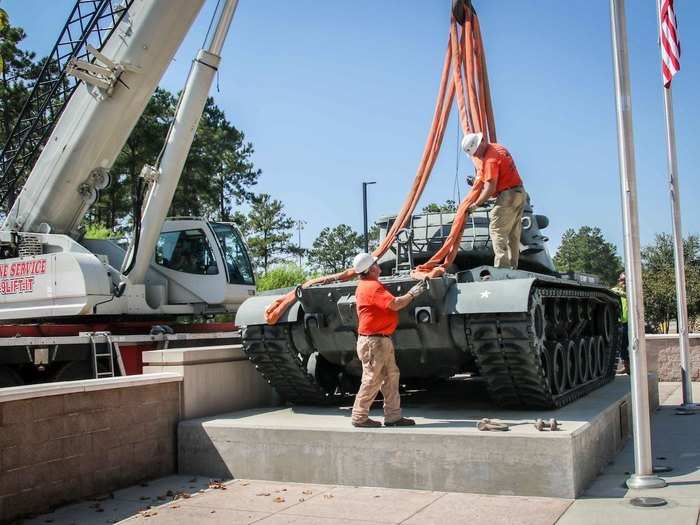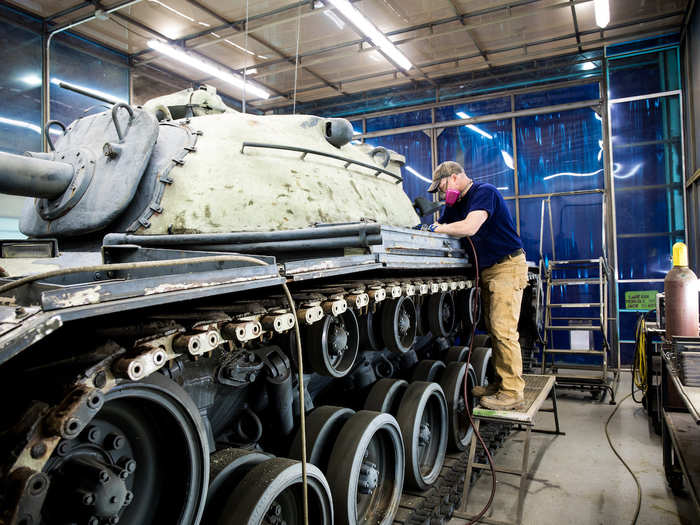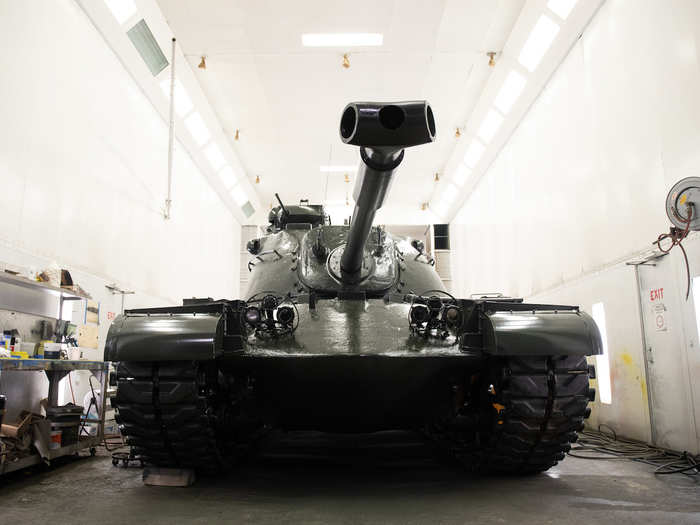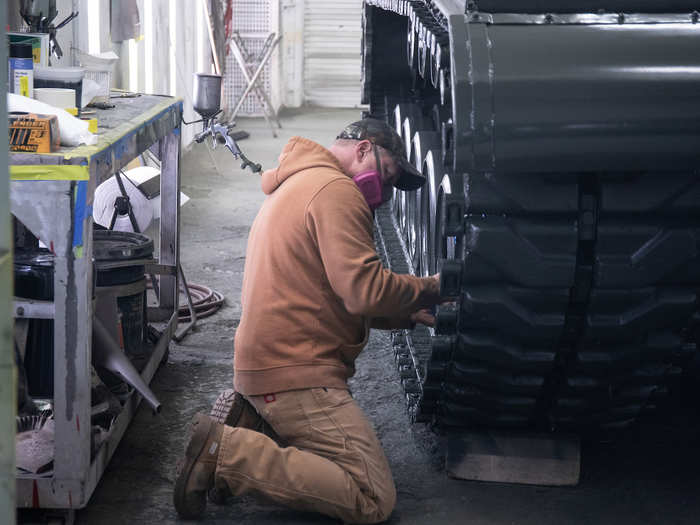Chief Warrant Officer 4 Rod Pickett, Logistics Maintenance Officer, 1st TSC, conducted the research, creating cost estimates for four potential locations, Fort Jackson, Fort Benning, Fort Bragg and Anniston Army Depot.
He determined Fort Knox was the best location because it had a Logistics Readiness Center (LRC) with the facilities and personnel needed to complete the job within the specifications.
"The reason it came to Fort Knox is Fort Knox used to be the home of the Armor and Cavalry, and as an armored piece of equipment, they still have the capabilities here via the Logistic Readiness Center (LRC) on Fort Knox," Pickett said.
"We did a comparative analysis of cost and time to repair it, and across the board Fort Knox won out," Pickett added.
Over the last two-and-a-half months, contractors at LRC have stripped the paint, removed rust and added sealant to make it watertight before adding a coat of historically accurate paint and stenciling.
Mathenia said the LRC has completed similar jobs on historic tanks for the Patton Museum on Fort Knox. He added that when working on vintage equipment you have to be very careful.
"There are very few of these that are out there; most of them are museum pieces, so if you break a part or it comes apart, then you're in trouble because then you're going to have fix it and its going to cost a lot of time and money," Mathenia said.
"That's why we are very careful when we're towing it around," he added.
Sgt. 1st Class Casey Steiner, Logistics Maintenance Management noncommissioned officer (NCO), coordinated the transportation of the tank from Shaw Air Force Base to Fort Knox and back. He also oversaw all stages of the preservation project to ensure it went smoothly.
"I hope they enjoy it," Steiner said, of the tank. "I hope it's everything they expected it to be, if not more, and hopefully it does them proud by being a nice monument for Patton Hall."







